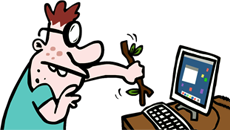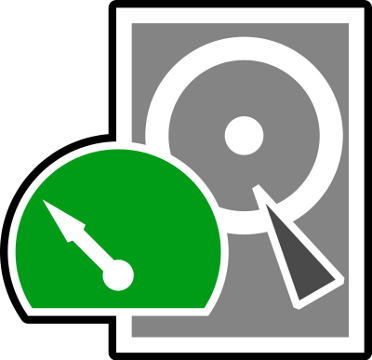|
1 2 3 4 |
<a href="http://www.cgsecurity.org/wiki/TestDisk" target="_blank">TestDisk</a> is a <strong>free data recovery software</strong> which is designed to <strong>recover lost partition tables or make non-bootable</strong>hard drives bootable again. In this tutorial i suppose that you have a lost partition/ partition table or corrupted File System or your primary bootable Hard Drive (the one with OS) is not bootable. In Detail. Test Disk can: |
- Fix partition table, recover deleted partition
- Recover FAT32 boot sector from its backup
- Rebuild FAT12/FAT16/FAT32 boot sector
- Fix FAT tables
- Rebuild NTFS boot sector
- Recover NTFS boot sector from its backup
- Fix MFT using MFT mirror
- Locate ext2/ext3/ext4 Backup SuperBlock
- Undelete files from FAT, NTFS and ext2 filesystem
- Copy files from deleted FAT, NTFS and ext2/ext3/ext4 partitions.
|
1 2 3 4 5 6 7 |
TestDisk can be executed on any OS and you can download it from <a href="http://www.cgsecurity.org/wiki/TestDisk_Download">here</a>. In order to run TestDisk unzip the files somewhere and : 1. If you have win Vista, win7 run testdisk_win.exe as Administrator (right click on it) 2. For Linux OS [crayon-678ef6f981f28889647442 lang="bash" ]<kbd>apt-get install testdisk |
and after installation type on a terminal testdisk.
When you get it running…
Create a log file.[/crayon]
|
1 2 3 |
Select with arrows Create and press Enter. <strong><span style="font-size: x-large;">Select your Disk.</span></strong> |
|
1 2 3 |
The next screen has a <strong>list of your hard drives</strong>. Select the <strong>damaged</strong> (up/down arrows), Select <strong>Proceed</strong> (right/left arrows) and press Enter. <strong><span style="font-size: x-large;">Select Partition Type.</span></strong> |
|
1 2 3 4 5 |
Next screen has a <strong>list with partition types</strong> (the default value propably will be the correct one). Select your partition type (up/down arrows) and press Enter to <strong>Proceed</strong>. <strong><span style="font-size: x-large;">Actions on the disk.</span></strong> |
|
1 2 3 4 5 6 7 8 9 10 11 12 13 14 15 16 17 18 |
Here you can choose what TestDisk Should do. First you must know what File System your drive uses. <strong>Tip:</strong> it's a long story talking about File System types and stuff. Normally if your drive is formatted in <strong>Windows OS</strong> it will be NTFS or FAT or FAT32. If it's formatted under <strong>Linux OS</strong> it should be ext2/<strong>3</strong>/4 propably ext3. if it's formatted under <strong>Mac OS</strong> normally should be <strong><a href="http://en.wikipedia.org/wiki/HFS_Plus">HFS</a> / HFS </strong> if your drive is a <strong>flash drive</strong> normally it should be FAT or FAT32. <strong>External Drives</strong> fall in the first two cases (winOS or Linux OS) so don't doubt much about them. Therefore use the default (if you don't know what you're doing), the default should be <strong>Analyze</strong>. Press Enter to proceed. <strong><span style="font-size: x-large;">Partition table list.</span></strong> |
|
1 2 3 4 5 6 7 8 9 10 |
Here you will see the <strong>current</strong> partition table. Press Enter to do a <strong>Quick Search</strong>. And press <strong>y</strong> if the disk was formatted under <strong>vista/win7 OS</strong> else press <strong>n</strong> . Wait until the TestDisk will show you the lost partition(s). Navigate with up/down arrow keys on partitions and press <strong>p</strong> to check your files in each. <strong><span style="font-size: x-large;">Save partition table or search for more.</span></strong> |
|
1 2 3 4 5 |
If your files are listed correctly you should write the partition table stracture( right/left arrows). Elsewhere you should search Deeper. To do so highlight <strong>Deeper Search</strong> and press Enter. <strong><span style="font-size: x-large;">The Deeper Search.</span></strong> |
|
1 2 3 4 5 6 7 8 9 10 11 12 13 14 15 |
The same story again. Navigate on partitions list and by pressing <strong>p</strong> see your files. <strong>D</strong> status stands for deleted partitions. IF you'll find a partition with damaged File System press <strong>q</strong> to go back. Do the same until you found the correct partition. When you've got it, change the status letter to <strong>L</strong> (stands for Logical Partition) with left/right arrows. Note: if the partition is signed as boot ( with <strong>*</strong> ) and you'll use it as boot partition anymore change it to <strong>P</strong>rimary. Press Enter to proceed. <strong><span style="font-size: x-large;">Finally: Partition table recovery.</span></strong> |
|
1 2 3 4 |
If all partitions are listed and only in this case, confirm at Write with Enter, y and OK. Now, the partitions are registered in the partition table. Quit TestDisk and reboot. |
|
1 2 |
Thanx For Reading. specktator |


